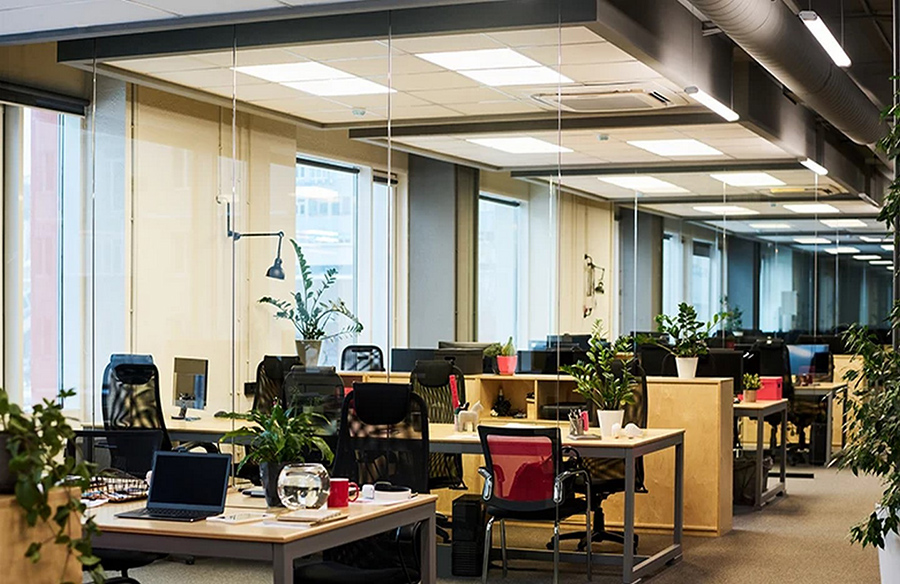
Introduction
Creating workspaces that foster productivity and employee engagement involves thoughtful consideration of various elements, including layout, furniture, and lighting. Among these, lighting holds a crucial role, not only enhancing visibility but also influencing employee well-being, focus, and overall performance. This article delves into the concept of lux levels, exploring their significance, and offering practical tips to achieve optimal lighting conditions in workspaces.
Understanding Lux Levels
Lux serves as a unit of measurement, quantifying the amount of light falling on a surface. In the context of workspaces, lux levels indicate the brightness or intensity of light in a given area. Determined by factors like the nature of work, task requirements, and visual comfort, recommended lux levels guide the design of modern office lighting.
Importance of Recommended Lux Levels
Maintaining appropriate lux levels is vital for multiple reasons. It ensures optimal visibility, reducing eye strain and fatigue. Moreover, proper lighting enhances concentration, productivity, and minimizes errors and accidents. Adequate lighting also contributes to overall employee comfort, positively impacting mood and job satisfaction.
Recommended Lux Levels for Different Spaces
- General Office Areas: For tasks like reading, writing, and computer work, a lux level of 300 to 500 is recommended, creating a comfortable environment for daily office tasks.
- Meeting Rooms and Conference Areas: Spaces involving collaborative work, presentations, and discussions benefit from lux levels ranging from 500 to 750, ensuring increased visibility and focus.
- Reception and Entrance Areas: Aim for a lux level of 200 to 300 to create a welcoming ambiance, considering these areas form the first impression for visitors.
- Workstations and Task-Oriented Areas: Spaces requiring intricate tasks, like design studios or laboratories, benefit from higher lux levels, typically ranging from 500 to 1000, depending on specific tasks.
Practical Tips for Optimal Lighting
- Natural Light: Maximize the use of natural light whenever possible by positioning workstations near windows or using glass partitions. Natural light not only illuminates but also enhances mood and well-being.
- Artificial Lighting: Supplement natural light with appropriate artificial sources, combining general fixtures like ceiling lights with task lighting such as desk lamps for flexibility in different tasks.
- Lighting Control: Implement control systems like dimmers or sensors to adjust artificial lighting based on natural light availability and specific needs throughout the day, ensuring consistent and energy-efficient lighting.
- Regular Maintenance: Regularly inspect and maintain LED office lighting fixtures to ensure optimal performance. Clean fixtures, replace faulty bulbs, and address lighting-related issues promptly to maintain recommended lux levels.
Conclusion
Understanding and implementing recommended lux levels contribute to a well-lit workspace that promotes productivity, comfort, and employee well-being. Tailor lighting solutions to the specific requirements of different areas within your workspace, creating an inspiring and efficient environment that supports the success of both employees and the business.












Leave a Reply